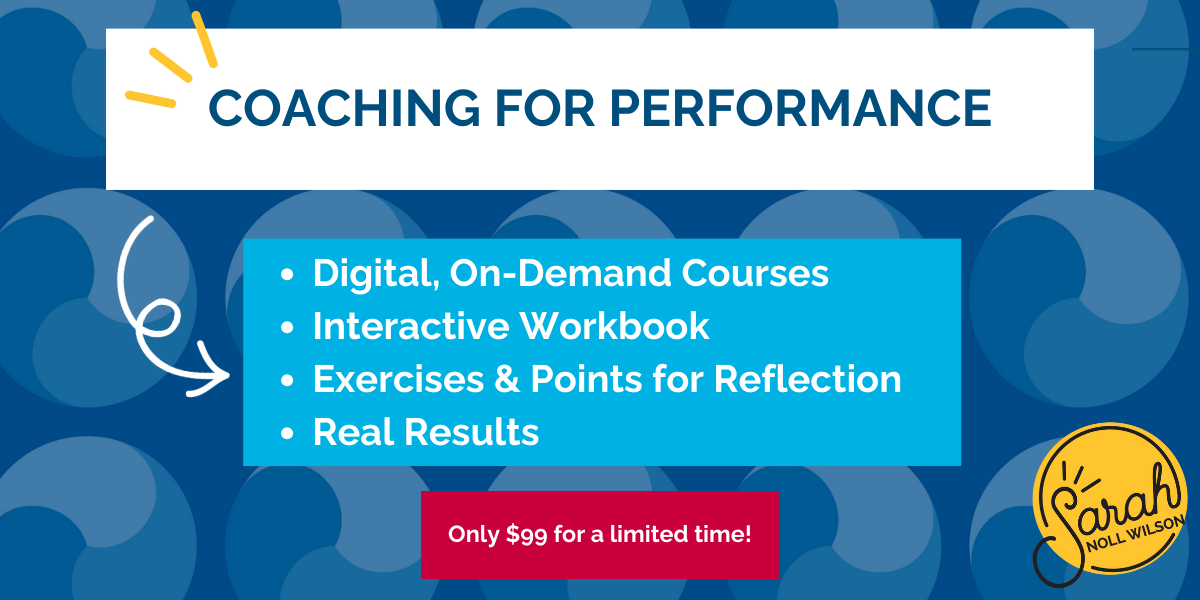
I noticed an interesting pattern when I started my journey to learn how to create cultures where people could talk about the tough stuff. Many people had the tools to have tricky conversations, taken numerous classes, and read countless books. But they still avoided them. Seeing this pattern inspired me to get even more curious about avoidance.
I posited several reasons for this: people did not have time to practice the skills and tools they knew to use. They did not know how to apply them correctly. They knew and still didn’t want to have the conversation. And while all of those (and more) were likely true for people, one thing I observed is that when people were avoiding, they were not consciously seeing the avoidance.
To free the elephants in your life, it isn’t enough to have new tools for conversations; you also must unpack your avoidance habits. When you can get clear about the reasons for your avoidance, and you can name them – that is the moment you can change them.
We observe three common types of avoidance in our work and world: Passive-Aggressive, Fearful, and Conscious.
Let’s break them down together.
Avoidance Type: Passive-Aggressive Avoidance
You already know what this avoidance looks like. I describe it as someone throwing a grenade into a situation and leaving you without any course for a solution. These types of avoidance behaviors go hand in hand with avoiding a conversation, avoiding accountability, and avoiding any reflection on their role in any given situation.
These behaviors look like contempt, dismissal, and walls between themselves and the issue or conversation they are avoiding.
So, what is causing people to behave in this way? Ironically, these behaviors usually come from a feeling of powerlessness. And when humans are feeling powerless, they may seek out ways to find power in their situation at all costs. That can look like power over a person, over a problem; they are becoming more controlling or even manipulative of conditions and others.
Avoidance Type: Fearful Avoidance
I explore this avoidance type in much more detail in my book, Don’t Feed the Elephants!, and if you are a fellow avoider (and dare I say someone with people-pleasing tendencies?), this book is my love letter to you.
People with fearful avoidance habits act in ways that stem from, you guessed it: fear—fear of retaliation, exclusion, or hurting and being hurt.
As a result, people may find themselves in situations they would rather not be in. If passive-aggressive comes from a place of power over, fearful avoidance can feel like having no power.
Avoidance Type: Conscious Avoidance
Where the first two avoidance types are reactionary, conscious avoidance comes from a responsive place. The avoidant person is actively choosing to disengage and avoid a situation.
Conscious avoidance may result from deciding it is not worth the energy or battle they anticipate in the issue. The relationship is not worth saving.
And feelings of powerlessness are present here as well. But instead of seeking to gain power or control over a person or situation, conscious avoidance comes from a place of reclaiming your internal power and guarding your peace.
And what is important here is the nuance. Conscious avoidance is not resentment or resignation: this is acceptance of a situation as it currently exists.
For example, let us say you live in a smaller town with limited employment options, and your current situation is such that you cannot obtain the desired employment. For conscious avoiders, a position of acceptance may look like this: You accept the case for what it is and instead choose to focus on what you need to do to show up as your best self in your current role.
Part of doing the work of freeing elephants is recognizing when we are feeding them to begin, and equally important is knowing when the right path is to not engage. There is no map or checklist to tell you when conscious avoidance is right; only you do.
As Marshall Goldsmith shares in his book Triggers, the three ways you can approach a situation are: to accept it, adjust it, or avoid it. And if you must choose to avoid a situation, make it a conscious choice to do so.
Sarah Noll Wilson is on a mission to help leaders build and rebuild teams. She aims to empower leaders to understand and honor the beautiful complexity of the humans they serve. Through her work as an Executive Coach, an in-demand Keynote Speaker, Researcher, Contributor to Harvard Business Review, and Bestselling Author of “Don’t Feed the Elephants”, Sarah helps leaders close the gap between what they intend to do and the actual impact they make. She hosts the podcast “Conversations on Conversations”, is certified in Co-Active Coaching and Conversational Intelligence, and is a frequent guest lecturer at universities. In addition to her work with organizations, Sarah is a passionate advocate for mental health.



